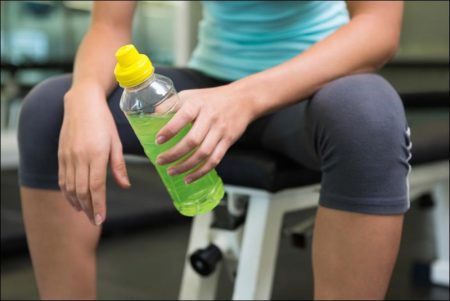Caffeine is a safe ingredient. In fact, caffeine is safely consumed every day, in a wide variety of foods and beverages. It has been consumed by BILLIONS of people around the world – and has been for HUNDREDS of years.
Most energy drinks contain significantly less caffeine than a similarly-sized coffeehouse coffee. In fact, many contain about half. A 16 fluid ounce energy drink typically contains between 160 and 240 milligrams of caffeine, while the same size coffeehouse coffee contains around 300 to 330 milligrams.
Energy drink products first appeared in Europe and Asia in the 1970s, and became available in the United States in the late 1990s.
While energy drinks are a growing category they remain a niche product accounting for just under 2 percent of the total U.S. non-alcoholic beverages market (Beverage Marketing Corporation)
A report on caffeine consumption among the U.S. population commissioned by FDA in 2009, and then updated in 2010 and again in 2012, indicated that teens and young adults ages 14 to 21 years consume, on average, approximately one-third the amount of caffeine as people over 21 – about 100 milligrams per day – and that most of their caffeine consumption is from beverages other than energy drinks. Importantly, the 2012 report also showed that the average amount of caffeine consumed has remained constant.
Energy drinks, their ingredients and labeling are regulated by the U.S. Food and Drug Administration (FDA) and, as with most consumer products, their advertising is subject to oversight by the U.S. Federal Trade Commission (FTC).
Many of the common ingredients found in energy drinks occur naturally in other foods that we enjoy regularly such as seafood, poultry and grains, as well as plants.
Taurine, a common ingredient in energy drinks, is an amino acid that is naturally found in the human body, as well as in food items such as seafood, scallops and poultry. Because taurine exists naturally in breast milk, it is also used as an additive in infant formula, one of the most researched products sold.
Guarana, another ingredient found in some energy drinks, is a nut-like seed from plants native to South America and is a natural source of caffeine.
Leading energy drink makers voluntarily:
display total caffeine amounts – from all sources – on their packages;
display an advisory statement on their packages indicating that the product is not intended (or recommended) for children, pregnant or nursing women, or persons sensitive to caffeine; and
do not market energy drinks to children or sell or market them in K-12 schools.
These labeling and marketing guidelines, among others, are included in the American Beverage Association’s Guidance for the Responsible Labeling and Marketing of Energy Drinks.
Visits: 82




